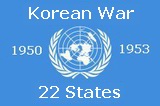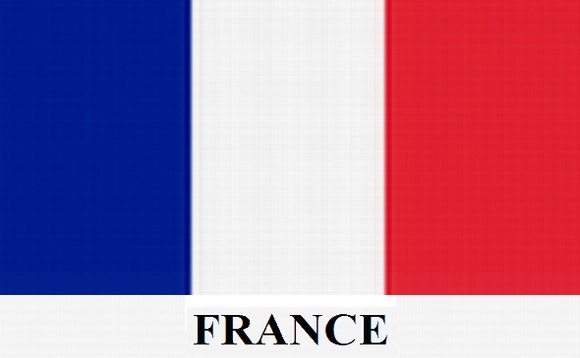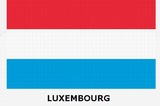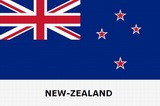History of the French Battalion (Korean War 1950-1953)
|
|
|
|
Active |
From September 1950 to July 1953 |
|
Country |
|
|
Type |
Infantry Battalion |
|
Size |
1,017 (3,421 over the course of the war) |
|
Attached |
23rd US Infanry Regiment, Second (Indianhead)US Infantry Division |
|
War |
Korean War |
|
Battles |
Twin tunnels - Chipyong-Ni - Inje - Heartbreak Ridge - Kumwha - Chorwon – Iron Triangle – T.Bone - Putchaetul - Arrow-Head - Song Kok and Chungasan. |
|
Fourragères |
Colour of Médaille militaire Colour of Croix de Guerre - Théâtres Opérations Extérieurs |
|
Military Awards |
Croix de guerre Théâtres Opérations Extérieurs with four Palm leaves |
|
Commanding Officiers |
General Raoul Magrin-Vernerey alias Ralph Monclar (gave up his rank of Lieutenant-General to the rank of lieutenant-colonel) Lieutenant-colonel François Borreill Lieutenant-colonel François de Germiny |
The French Battalion of the United Nations Organisation (French: Bataillon français de l'ONU, BF-ONU) was a battalion of volunteers made up of active and reserve French military personnel sent to the Korean Peninsula as part of the UN fighting forces during the Korean War.
The French Battalion during the Korean War (1950 – 1953)
Lieutenant General Raoul Magrin-Vernerey, better known under his “nom de guerre” or Alias, Ralph Monclar, Inspector of the French Foreign Legion and a hero of World War II, supported Chief of Staff of the French Army General Clément Blanc's decision to form a volunteer force and agreed to command the new unit, accepting a demotion back to the rank of lieutenant-colonel.
The French Battalion arrived in Busan, South Korea on November 29, 1950 and was placed under the operational control of the 23rd U.S. Infantry Regiment, 2nd U.S. Infantry Division for training and equipment. Despite initial fears about French forces being "on the rout", the battalion carried out several successful early actions and earned the respect of General Matthew Ridgway, commander of the U.S. Eighth Army.
From January 7–12, 1951, the French Battalion participated in the First and Second Battle of Wonju where it stopped the North Korean advance. It was followed by the Battle of the Twin Tunnels (February 1–2, 1951) and of Chipyong-ni (February 3–16, 1951). These battles, during which the battalion resisted the attacks of four Chinese divisions for three days, allowed the 8th Army to score a victorious counter-offensive. Three weeks later, the battalion was engaged in combat for Hill 1037 (about 50 miles east of Seoul) and lost 40 soldiers with 200 wounded while attacking and capturing the hill.
In the spring of 1951, the battalion crossed the 38th parallel into the Hwacheon region. The destruction of an engineering platoon led to a partial rout of the French Battalion. However it allowed U.S forces to stop the new Chinese offensive. In the fall of 1951, the French took part in the Battle of Heartbreak Ridge. In the course of these combats which lasted a month, 60 French soldiers were killed and 200 were wounded.
See on You tube the film Crèvecœur (Heartbreak Ridge) https://www.youtube.com/watch?v=p18dlVGXod8
One member of the French Battalion, Louis Misseri, was awarded the Distinguished Service Cross by the United States for his action at Heartbreak Ridge. His citation reads:
“The Distinguished Service Cross is presented to Louis Misseri, Sergeant, Army of France, for extraordinary heroism in connection with military operations against an armed enemy of the United Nations while serving with the Third Company, French Battalion, attached to the 23rd Infantry Regiment, 2nd Infantry Division, in action against enemy forces at Pia-ri, Korea on September 26, 1951. As a squad leader in an attack on "Heartbreak Ridge," Sergeant Misseri led his squad through an intense barrage of enemy mortar and artillery fire to the slope on which enemy bunkers were located. Dividing his squad into two sections, he personally led one section of three men in an assault upon the bunkers. While his comrades covered his advance, he moved forward alone through a hail of fire, attacked the first bunker, and silenced it. He continued his assault until the way had been cleared for his squad to advance and reorganize. When the enemy launched a counterattack, Sergeant Misseri, although seriously wounded, drove them back, inflicting fifteen casualties with his rifle. When this position became untenable and he was ordered to withdraw, he sent his men back one by one while he covered their withdrawal. The last man to leave the hill, except for one other who helped him because of his wounded condition, he would not allow himself to be evacuated until he had made a complete report of his mission. One of the very few men to reach the top of "Heartbreak Ridge" during this costly attack, Sergeant Misseri's gallantry and extraordinary devotion to duty reflect the highest credit on him and uphold the finest traditions of the Army and the Republic of France”.
The commander of the 23rd U.S. Infantry Regiment said of the French Battalion:
“When you order them [the French] in defence, you're sure they'll hold the position. When you show them a hill to be seized, you're sure they'll manage to get atop. You may leave for two days, storms of shells and waves of enemies may swarm over them, the French are still there”!
In an address to a joint session of the United States Congress in May 1952, General Ridgway said the following:
“I shall speak briefly of the 23rd US Infantry Regiment, Colonel Paul L. Freeman commanding, [and] with the French Battalion... Isolated far in advance of the general battle line, completely surrounded in near-zero weather, they repelled repeated assaults by day and night by vastly superior numbers of Chinese. They were finally relieved... I want to say that these American fighting men, with their French comrades-in-arms, measured up in every way to the battle conduct of the finest troops America and France have produced throughout their national existence”.
In the fall of 1952, after a lethal war of positions, similar to the Battle of Verdun during World War I, the battalion put a halt in Chongwon, South Korea, to a Chinese offensive toward Seoul. This resistance resulted in 47 dead and 144 wounded. The total Chinese losses against the French battalion were estimated at 2000 men. In the winter and the spring of 1953, the battalion took part in battles which kept the North Korean and Chinese forces from reaching Seoul.
After the signing of the Korean Armistice Agreement in July 1953, the French Battalion left Korea with four French Citations to the Order of the Army; the French Fourragère in the colors of the Military Medal; three American Distinguished Presidential Unit Citations and two Korean Presidential Citations. Forty-four of the French casualties remained eventually buried at the United Nations Memorial Cemetery in Busan, South Korea.
French Korean War Veteran Associations
- The Association Nationale des Anciens Combattants de la Seconde (Indian Head) Division des États-Unis et du bataillon Français de l'O.N.U. en Corée – Head Officie: 92400 Courbevoie - France. This Korean War Veteran Association was self-dissolving in 2000 because of declining demographics due to the age of its members.
- The Association Nationale des Forces Françaises de l'O.N.U. et du Régiment de Corée (A.N.A.F.F. ONU BC et R.C. 156e R.I.) (Regimental Association including veterans from the French Battalion in Korea regrouping, Sailors from the French Navy Ship La Grandière (operation Chromite) years from 1950 to 1953, but also veterans from the Régiment de Corée during the F irst Indochina War (GM100) and the Algerian War (156e RI).
This association changed its name to: Association Nationale des Anciens et Amis des Forces Françaises de l'ONU du bataillon et Régiment de Corée, 156e R.I. (ANAAFF/ONU BC & RC 156 RI). Head Office: 10, place Charles Digeon 94160 Saint-Mandé. Chairman: Mr. Patrick Beaudouin has beeen Mayor of the town of Saint-Mandé since 1995. Mr. Beaudoin was a Member of the French Parliament in Paris from 2002 to 2012.



















